
Journal of Nanostructures
Scope & Guideline
Bridging Academia and Industry through Nanotechnology
Introduction
Aims and Scopes
- Nanomaterials Synthesis and Characterization:
Research focusing on various methods for synthesizing nanomaterials, including chemical, physical, and biological approaches. The characterization of these materials is also a key area, involving techniques such as spectroscopy, microscopy, and thermal analysis. - Biological Applications of Nanostructures:
Investigations into the biocompatibility, toxicity, and therapeutic potential of nanomaterials, including their use in drug delivery systems, imaging agents, and as antibacterial agents. - Environmental Applications and Remediation:
Studies that explore the use of nanomaterials in environmental remediation, including wastewater treatment and pollutant degradation. This includes photocatalytic applications and the removal of heavy metals and dyes from water. - Nanocomposites and Material Enhancements:
Research on the development and application of nanocomposites, which combine nanoparticles with polymers, metals, or ceramics to enhance their properties for various applications such as coatings, sensors, and structural materials. - Energy Applications of Nanostructured Materials:
Exploration of nanotechnology in energy-related fields, including solar cells, batteries, and photocatalysis, focusing on improving efficiency and performance through innovative nanostructure designs.
Trending and Emerging
- Green and Sustainable Nanotechnology:
An increasing number of publications are focusing on eco-friendly synthesis methods for nanomaterials, emphasizing the use of natural extracts and sustainable processes. This trend aligns with global efforts to reduce environmental impact and enhance the sustainability of nanotechnology. - Biomedical Applications and Nanomedicine:
There is a noticeable increase in research aimed at exploring the therapeutic potential of nanomaterials, particularly in drug delivery, imaging, and cancer treatment. This trend highlights the growing intersection between nanotechnology and medicine. - Photocatalysis and Environmental Remediation:
Research on photocatalytic applications of nanomaterials for environmental remediation is gaining momentum. This includes studies on the degradation of pollutants and the removal of heavy metals from wastewater, reflecting heightened awareness of environmental issues. - Nanocomposites for Advanced Functional Materials:
The development of advanced nanocomposites with enhanced functionalities for applications in electronics, energy storage, and structural materials is increasingly prevalent. This trend reflects a broader interest in integrating nanotechnology with traditional materials science. - Nanostructured Materials for Energy Harvesting:
Research into nanostructured materials for energy applications, such as solar cells and batteries, is on the rise. This trend underscores the importance of nanotechnology in addressing global energy challenges and improving energy efficiency.
Declining or Waning
- Traditional Chemical Methods for Nanoparticle Synthesis:
There has been a noticeable decline in publications utilizing conventional chemical synthesis methods, as researchers increasingly favor green and sustainable synthesis techniques that utilize biological materials or environmentally friendly processes. - Basic Physical Property Studies of Nanomaterials:
Research focused solely on the basic physical properties of nanomaterials without application context has become less frequent. The trend has shifted towards studies that integrate these properties with practical applications, particularly in biomedical and environmental fields. - Nanostructures for Industrial Applications:
Although still present, the frequency of studies specifically targeting industrial applications of nanostructures has diminished, possibly due to the focus shifting towards more innovative and interdisciplinary applications in healthcare and environmental science.
Similar Journals

Silicon
Illuminating Breakthroughs in Material ScienceSilicon is a distinguished academic journal published by Springer, focusing on significant advancements in the field of electronic, optical, and magnetic materials. With an ISSN of 1876-990X and an E-ISSN of 1876-9918, this journal emphasizes the latest research innovations and technological breakthroughs relevant to the silicon material industry. Hailing from the Netherlands, with an address at Van Godewijckstraat 30, 3311 GZ Dordrecht, it has been a pivotal platform since its inception in 2009, continuing to serve the scientific community up until 2024. Notably, it ranks in the Q2 category for its contributions within Electronic, Optical, and Magnetic Materials, and holds an impressive Scopus rank of 81st out of 284, placing it in the 71st percentile of this competitive field. Researchers, professionals, and students seeking a deeper understanding of silicon-related research will find Silicon to be an invaluable resource, offering insightful studies and fostering collaborative dialogues among experts.

Advanced Materials Interfaces
Fostering Collaboration in Materials Engineering ExcellenceAdvanced Materials Interfaces is a premier journal dedicated to the exploration and advancement of materials science, with particular emphasis on the interfacial phenomena that govern the behavior of materials in various engineering applications. Published by WILEY in the United Kingdom, this Open Access journal, established in 2014, has quickly ascended to a Q1 category ranking in both Mechanical Engineering and Mechanics of Materials as of 2023, reflecting its significant influence and excellence in the field. With impressive Scopus Ranks, such as #81 out of 672 in Mechanical Engineering and #58 out of 398 in Mechanics of Materials, it serves as a vital resource for researchers and practitioners aiming to push the boundaries of materials innovation. The journal provides unrestricted access to its cutting-edge research, promoting collaboration and dissemination of knowledge among the global scientific community, solidifying its role as a vital contributor to the ever-evolving landscape of materials engineering.
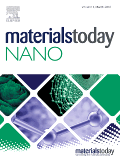
Materials Today Nano
Advancing the Frontiers of Nano-Materials ResearchMaterials Today Nano, published by Elsevier, is a premier academic journal dedicated to the forefront of nano-materials research, encompassing innovations and advancements in biomaterials, condensed matter physics, electronic, optical, and magnetic materials, as well as materials chemistry. With an impressive Q1 ranking across multiple categories, including biomaterials and materials chemistry, this journal serves as a essential platform for researchers, professionals, and students aiming to contribute to and stay informed on cutting-edge developments that push the boundaries of materials science. Its open access model allows for wider dissemination of high-impact findings, ensuring that the research reaches a global audience. Operating from the United Kingdom, Materials Today Nano plays a vital role in fostering interdisciplinary collaboration and advancing scientific understanding in this rapidly evolving field.
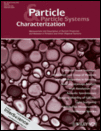
PARTICLE & PARTICLE SYSTEMS CHARACTERIZATION
Characterizing Particles for a Brighter Scientific FuturePARTICLE & PARTICLE SYSTEMS CHARACTERIZATION is a distinguished journal dedicated to advancing the knowledge within the fields of Chemistry, Condensed Matter Physics, and Materials Science. Published by WILEY-V C H VERLAG GMBH in Germany, this journal has established a solid reputation since its inception in 1984, showcasing research aimed at understanding the intricate properties and behaviors of particulate systems. With an impressive Q2 ranking in its respective categories and Scopus ranks indicating a robust standing in the global research community, it serves as an essential resource for researchers, professionals, and students. Although it does not currently offer Open Access options, its comprehensive articles and reviews provide valuable insights that contribute significantly to the ongoing discourse in these scientific domains. As it prepares to celebrate four decades of publication, PARTICLE & PARTICLE SYSTEMS CHARACTERIZATION continues to provide a vital platform for emerging knowledge, fostering innovation and collaboration among scientists dedicated to the study of particle systems.
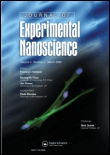
Journal of Experimental Nanoscience
Advancing the Frontiers of NanoscienceThe Journal of Experimental Nanoscience, published by Taylor & Francis Ltd, is an esteemed open-access journal dedicated to advancing the field of nanoscience and its applications across various disciplines. Since its establishment, the journal has aimed to provide a comprehensive platform for researchers and professionals to disseminate innovative findings in nanotechnology, bioengineering, and materials science. With an ISSN of 1745-8080 and E-ISSN of 1745-8099, this journal has been pivotal in promoting high-quality research in its converged years from 2006 to 2024. Recognized for its contributions, it currently holds a Q3 ranking in core categories such as Bioengineering, Biomedical Engineering, Materials Science, and Nanoscience and Nanotechnology. Although its H-index is not specified, its Scopus ranks reflect its growing influence, with notable percentiles in various engineering fields. By offering open access since 2016, the Journal of Experimental Nanoscience enhances the accessibility of vital research to a global audience. Researchers, professionals, and students will find this journal an invaluable resource for staying abreast of the latest advancements and breakthroughs in nanoscience.
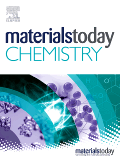
Materials Today Chemistry
Elevating Knowledge in Materials Science and ChemistryMaterials Today Chemistry, published by Elsevier Science Ltd, is a leading journal in the field of materials science, with a primary focus on innovative research and advancements in chemistry relating to materials. Operating under ISSN 2468-5194, the journal has made a significant impact in various specialized areas such as biomaterials, catalysis, colloid and surface chemistry, and polymers, achieving a Q1 ranking across these categories in 2023. With its commitment to high-quality, peer-reviewed content, Materials Today Chemistry serves as an essential platform for researchers, professionals, and students aiming to stay at the forefront of materials research. The journal provides an open access model, enabling wide dissemination of research findings and fostering collaboration among the scientific community. Its esteemed ranking on Scopus, including a remarkable percentile position in materials chemistry and catalysis, underscores its importance in advancing the understanding and application of novel materials. Whether you're delving into cutting-edge synthesis techniques or exploring the latest in materials applications, Materials Today Chemistry remains a pivotal resource for breakthrough discoveries and pivotal insights in the realm of materials science.

JOURNAL OF OPTOELECTRONICS AND ADVANCED MATERIALS
Unveiling Breakthroughs in Advanced Materials and OptoelectronicsJOURNAL OF OPTOELECTRONICS AND ADVANCED MATERIALS, published by the NATL INST OPTOELECTRONICS in Romania, is an esteemed academic journal dedicated to disseminating innovative research in the fields of optoelectronics and advanced materials. With an ISSN of 1454-4164 and E-ISSN 1841-7132, the journal provides a platform for researchers to share their findings and technological advancements from 1999 to 2024. Despite being placed in the Q4 quartile across several categories—including Atomic and Molecular Physics, Condensed Matter Physics, and Electrical and Electronic Engineering—the journal serves as an essential resource for highlighting significant developments in its respective fields. Researchers and professionals may find valuable insights that foster collaboration and inspire further investigation, thereby contributing to the continuous evolution of optoelectronics and materials science.

Journal of Ovonic Research
Illuminating the Future of Electronic and Optical Materials.Journal of Ovonic Research is a distinguished publication dedicated to advancing the fields of electronic, optical, and magnetic materials. Published by VIRTUAL CO PHYSICS SRL, this journal offers a platform for researchers to share innovative findings and developments that push the boundaries of technology and materials science. With an ISSN of 1842-2403 and an E-ISSN of 1584-9953, it provides an important service to the academic community, particularly within Romania and beyond. Despite its recent inception in 2011, the journal has gained traction in the academic landscape, reflecting a Q4 quartile ranking in crucial categories such as Electronic, Optical and Magnetic Materials, as well as in Physics and Astronomy. The Scopus rankings further underscore its positioning, ranking within the 25th to 37th percentile across various disciplines, making it a valuable resource for professionals and students alike. Although the journal currently operates on a non-open access basis, it remains committed to exploring the latest advancements in materials science, encouraging interdisciplinary collaboration and fostering a deeper understanding of surface, coating, and film technologies. As the field evolves, Journal of Ovonic Research stands as a beacon for scholarly communication, bridging the gap between research and practical application.

Nano Express
Catalyzing global dialogue in nanotechnology.Nano Express is an esteemed open-access journal published by IOP Publishing Ltd, dedicated to advancing research in the fields of nanotechnology and materials science. Since its launch in 2020, the journal has swiftly established itself as a vital resource for researchers and professionals, garnering significant recognition in various domains, including biomaterials, electronic, optical and magnetic materials, and polymers and plastics. With a commendable categorization in Scopus quartiles, it ranks in Q2 for Electronic, Optical and Magnetic Materials, and maintains a top percentile in several others, exemplifying its commitment to high-quality research dissemination. Located in the United Kingdom, this journal fosters a global dialogue among experts and newcomers alike, facilitating open access to innovative research that drives the future of nanotechnology. By offering a platform for groundbreaking studies and reviews, Nano Express aims to bridge the gap between theoretical understanding and practical application, championing the development of next-generation materials that have the potential to transform various industries.
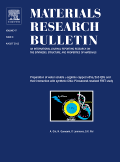
MATERIALS RESEARCH BULLETIN
Driving excellence in materials research and application.MATERIALS RESEARCH BULLETIN is a prestigious journal published by Pergamon-Elsevier Science Ltd, dedicated to advancing the field of materials science and engineering. Since its inception in 1966, the journal has served as a platform for high-impact research, particularly in areas such as condensed matter physics, mechanical engineering, and materials mechanics. With an impressive Q1 ranking in multiple categories, including Condensed Matter Physics and Materials Science, MATERIALS RESEARCH BULLETIN stands out as a leading resource in its domain, aiming to disseminate innovative research findings and methodologies that address fundamental and applied aspects of materials. The journal’s rigorous peer-review process ensures the publication of high-quality articles, making it an essential resource for researchers, professionals, and students alike. With its ongoing commitment to fostering scientific discourse and collaboration, MATERIALS RESEARCH BULLETIN remains at the forefront of materials research, contributing significantly to the global scientific community.